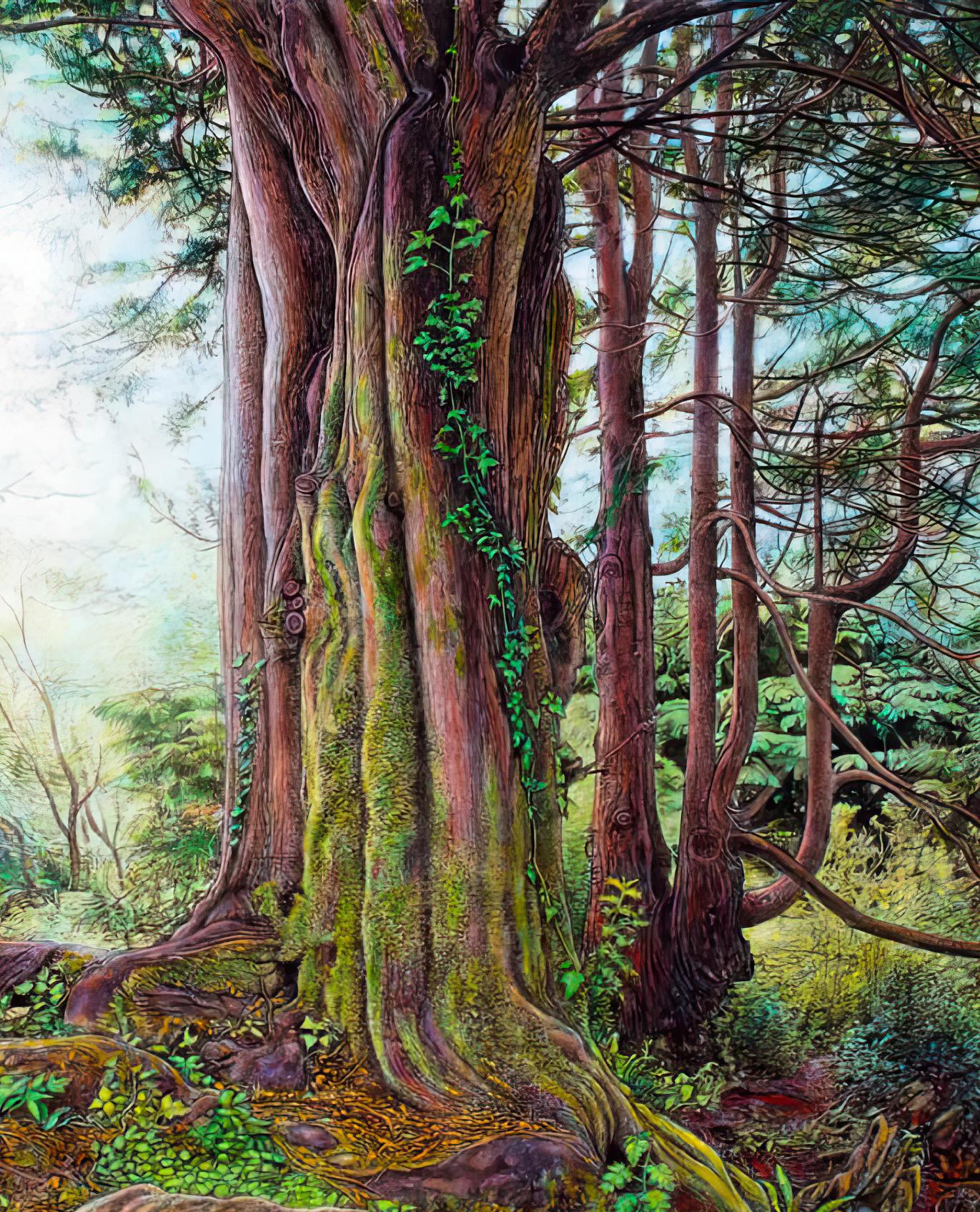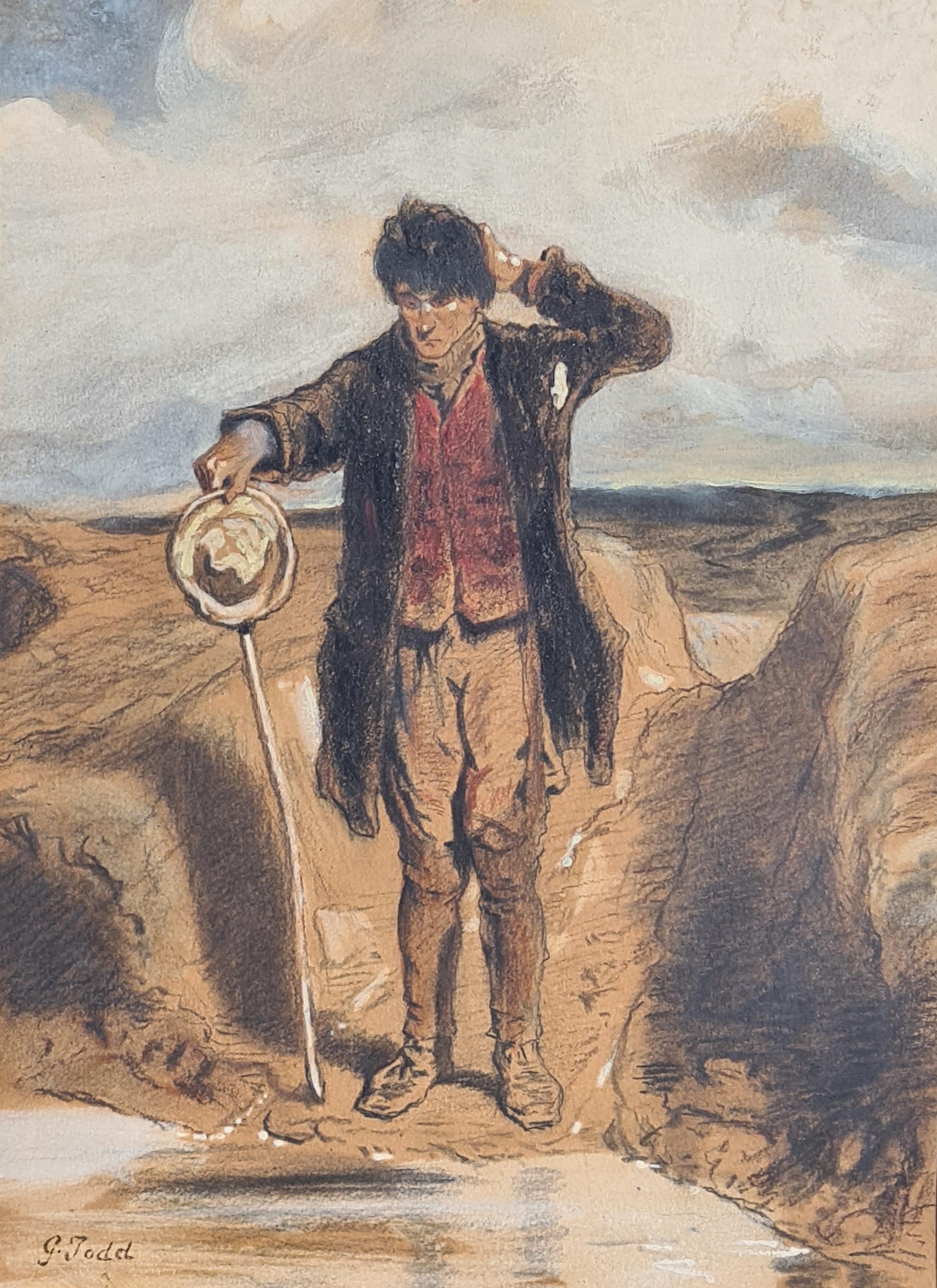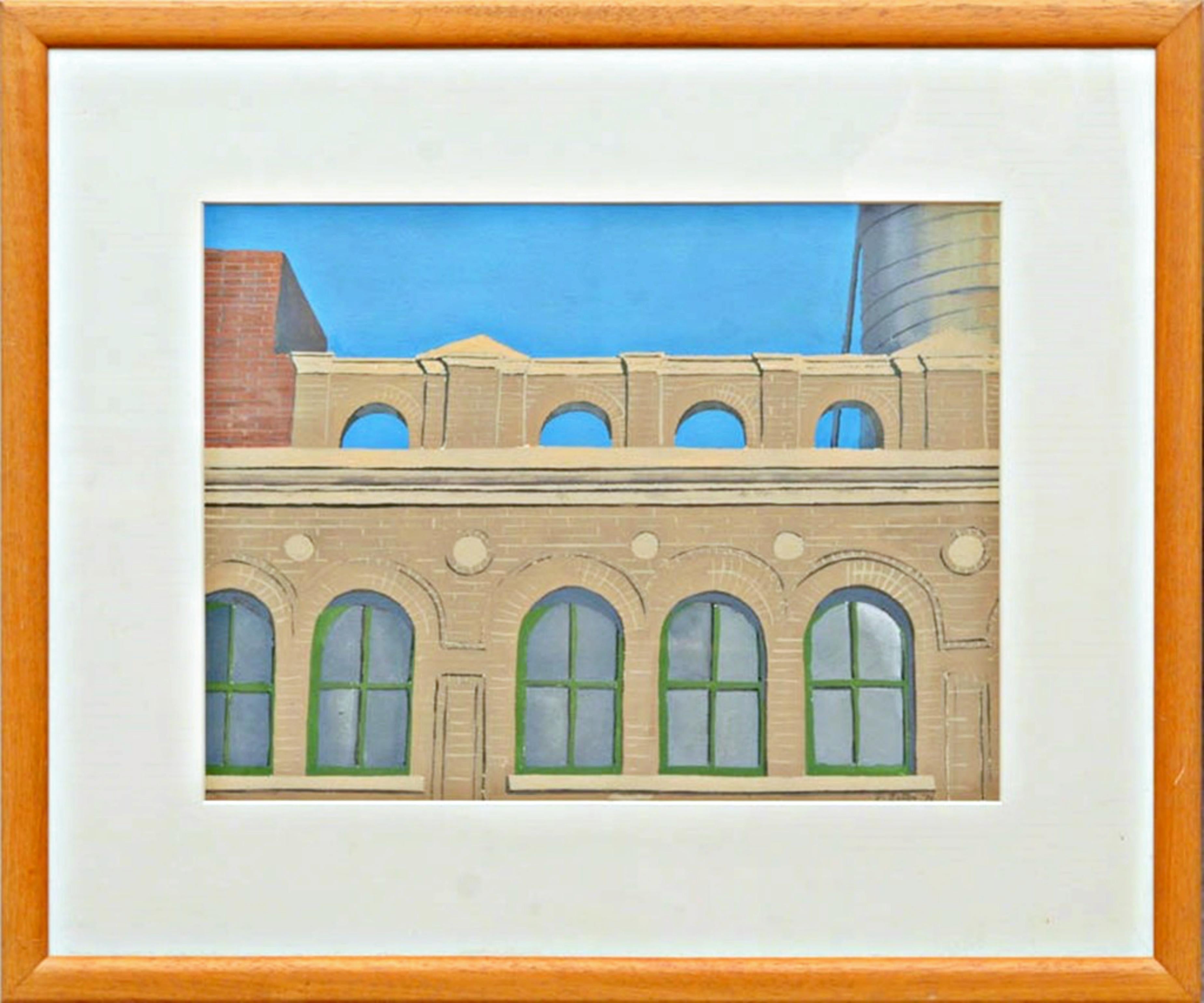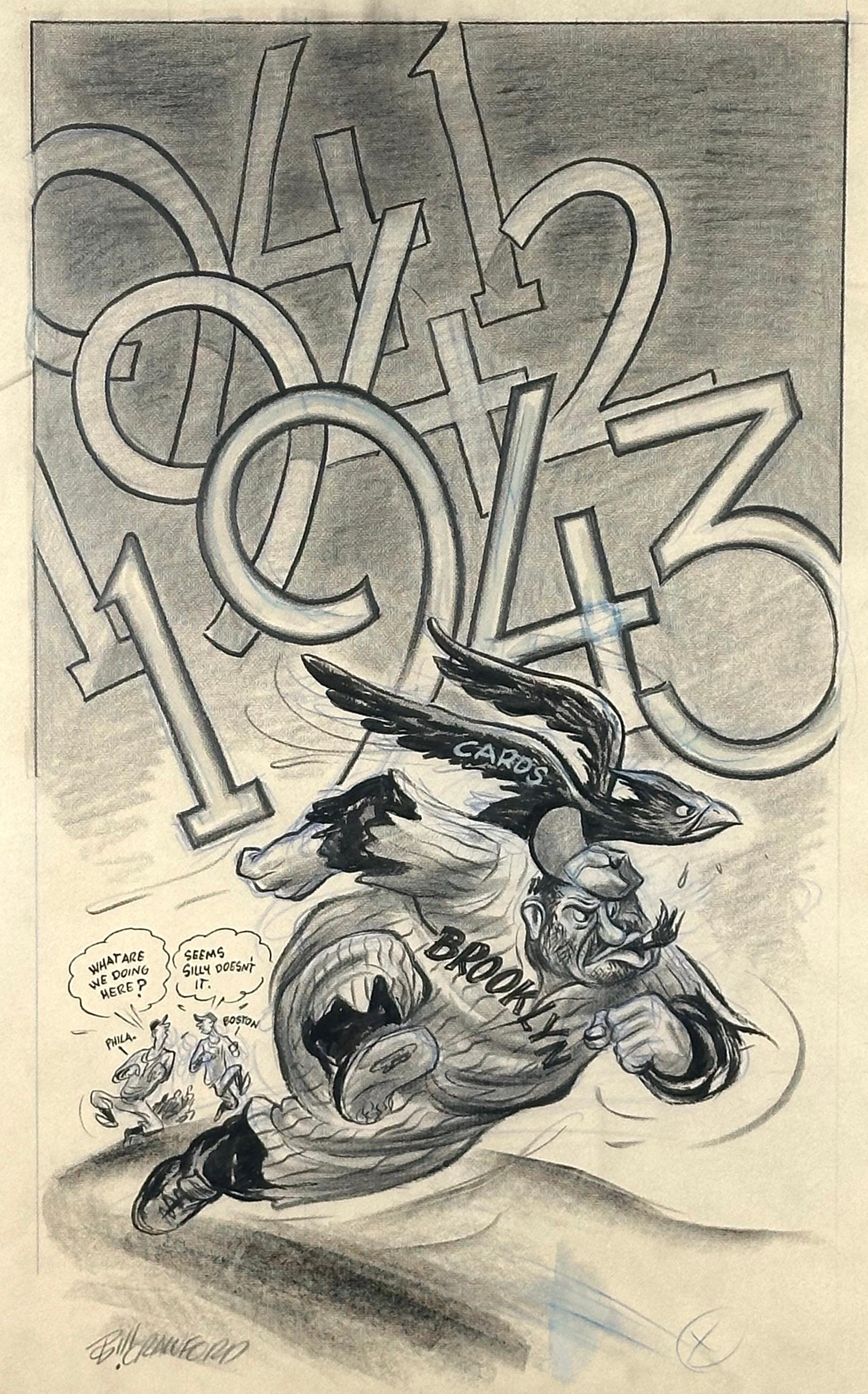Items Similar to Sailors at Cafe du Globe
Want more images or videos?
Request additional images or videos from the seller
1 of 12
Charles RocherSailors at Cafe du Globe ca. 1920
ca. 1920
About the Item
Charles Rocher (1890-1962. Sailors, ca. 1920s. Gouache on paper. Sheet measures 19 x 25 inches. Considerable damage and loss as depicted. Signed lower left.
- Creator:Charles Rocher (1890 - 1962, French)
- Creation Year:ca. 1920
- Dimensions:Height: 19 in (48.26 cm)Width: 25 in (63.5 cm)
- Medium:
- Movement & Style:
- Period:
- Condition:
- Gallery Location:Wilton Manors, FL
- Reference Number:1stDibs: LU245211504542
About the Seller
4.9
Vetted Seller
These experienced sellers undergo a comprehensive evaluation by our team of in-house experts.
Established in 2007
1stDibs seller since 2015
322 sales on 1stDibs
Typical response time: 5 hours
- ShippingRetrieving quote...Ships From: Wilton Manors, FL
- Return PolicyA return for this item may be initiated within 7 days of delivery.
More From This SellerView All
- Vintage Esquire Magazine cartoonLocated in Wilton Manors, FLBarbara Shermund (1899-1978). Esquire Magazine Cartoon, 1951. Ink, watercolor and gouache on heavy illustration paper, image measures 9.5 x 14.5 inches; matting measures 15.5 x 21 inches. Matting board is in poor condition. Signed lower center. Painting is in very good condition. Unframed. Provenance: Ethel Maud Mott Herman, artist (1883-1984), West Orange NJ. For two decades, she drew almost 600 cartoons for The New Yorker with female characters that commented on life with wit, intelligence and irony. In the mid-1920s, Harold Ross, the founder of a new magazine called The New Yorker, was looking for cartoonists who could create sardonic, highbrow illustrations accompanied by witty captions that would function as social critiques. He found that talent in Barbara Shermund. For about two decades, until the 1940s, Shermund helped Ross and his first art editor, Rea Irvin, realize their vision by contributing almost 600 cartoons and sassy captions with a fresh, feminist voice. Her cartoons commented on life with wit, intelligence and irony, using female characters who critiqued the patriarchy and celebrated speakeasies, cafes, spunky women and leisure. They spoke directly to flapper women of the era who defied convention with a new sense of political, social and economic independence. “Shermund’s women spoke their minds about sex, marriage and society; smoked cigarettes and drank; and poked fun at everything in an era when it was not common to see young women doing so,” Caitlin A. McGurk wrote in 2020 for the Art Students League. In one Shermund cartoon, published in The New Yorker in 1928, two forlorn women sit and chat on couches. “Yeah,” one says, “I guess the best thing to do is to just get married and forget about love.” “While for many, the idea of a New Yorker cartoon conjures a highbrow, dry non sequitur — often more alienating than familiar — Shermund’s cartoons are the antithesis,” wrote McGurk, who is an associate curator and assistant professor at Ohio State University’s Billy Ireland Cartoon Library & Museum. “They are about human nature, relationships, youth and age.” (McGurk is writing a book about Shermund. And yet by the 1940s and ’50s, as America’s postwar focus shifted to domestic life, Shermund’s feminist voice and cool critique of society fell out of vogue. Her last cartoon appeared in The New Yorker in 1944, and much of her life and career after that remains unclear. No major newspaper wrote about her death in 1978 — The New York Times was on strike then, along with The Daily News and The New York Post — and her ashes sat in a New Jersey funeral home...Category
1950s Realist Figurative Paintings
MaterialsWatercolor, Gouache
- Same Old Story (Brooklyn Dodgers & St. Louis Cardinals Illustration)Located in Wilton Manors, FLBill Crawford (1913-1982). Original illustration artwork depicting teams as they advance to the World Series. Depicted are representations of the St. Louis Cardinals and The Brooklyn...Category
1940s Realist Figurative Paintings
MaterialsPaper, Charcoal, Ink, Gouache, Pencil
- Life Magazine Satirical Society Cartoon IllustrationLocated in Wilton Manors, FLBarbara Shermund (1899-1978). Society Satirical Cartoon, ca. 1940s. Gouache on heavy illustration paper, image measures 17 x 14 inches; 23 x 20 inches in matting. Signed lower left. Very good condition but matting panel should be replaced. Unframed. Provenance: Ethel Maud Mott Herman, artist (1883-1984), West Orange NJ. For two decades, she drew almost 600 cartoons for The New Yorker with female characters that commented on life with wit, intelligence and irony. In the mid-1920s, Harold Ross, the founder of a new magazine called The New Yorker, was looking for cartoonists who could create sardonic, highbrow illustrations accompanied by witty captions that would function as social critiques. He found that talent in Barbara Shermund. For about two decades, until the 1940s, Shermund helped Ross and his first art editor, Rea Irvin, realize their vision by contributing almost 600 cartoons and sassy captions with a fresh, feminist voice. Her cartoons commented on life with wit, intelligence and irony, using female characters who critiqued the patriarchy and celebrated speakeasies, cafes, spunky women and leisure. They spoke directly to flapper women of the era who defied convention with a new sense of political, social and economic independence. “Shermund’s women spoke their minds about sex, marriage and society; smoked cigarettes and drank; and poked fun at everything in an era when it was not common to see young women doing so,” Caitlin A. McGurk wrote in 2020 for the Art Students League. In one Shermund cartoon, published in The New Yorker in 1928, two forlorn women sit and chat on couches. “Yeah,” one says, “I guess the best thing to do is to just get married and forget about love.” “While for many, the idea of a New Yorker cartoon conjures a highbrow, dry non sequitur — often more alienating than familiar — Shermund’s cartoons are the antithesis,” wrote McGurk, who is an associate curator and assistant professor at Ohio State University’s Billy Ireland Cartoon Library & Museum. “They are about human nature, relationships, youth and age.” (McGurk is writing a book about Shermund. And yet by the 1940s and ’50s, as America’s postwar focus shifted to domestic life, Shermund’s feminist voice and cool critique of society fell out of vogue. Her last cartoon appeared in The New Yorker in 1944, and much of her life and career after that remains unclear. No major newspaper wrote about her death in 1978 — The New York Times was on strike then, along with The Daily News and The New York Post — and her ashes sat in a New Jersey funeral...Category
1940s Realist Figurative Paintings
MaterialsGouache
- Broadway Costume Design IllustrationLocated in Wilton Manors, FLFabulous illustration depicts a costume for Broadway production. Gouache on illustration board, image measures 10.5 x 16.5 inches; 15 x 22 inches framed. Excellent condition in ori...Category
1960s Realist Figurative Paintings
MaterialsGouache, Illustration Board
- Black Hamlet (Momento Mori) CityscapeLocated in Wilton Manors, FLBeautiful painting depicts a young black man holding skull and flip phone. Gouache on illustration board, image measuring 8 x 10 inches; 16 x 20 inches framed. Signed lower left.Category
Early 2000s Realist Figurative Paintings
MaterialsGouache, Illustration Board
- Fancy Department Store Satirical CartoonLocated in Wilton Manors, FLBarbara Shermund (1899-1978). Fancy Department Store Satirical Cartoon, ca. 1930's. Ink, watercolor and gouache on heavy illustration paper, panel measures 19 x 15 inches. Signed lower right. Very good condition. Unframed. Provenance: Ethel Maud Mott Herman, artist (1883-1984), West Orange NJ. For two decades, she drew almost 600 cartoons for The New Yorker with female characters that commented on life with wit, intelligence and irony. In the mid-1920s, Harold Ross, the founder of a new magazine called The New Yorker, was looking for cartoonists who could create sardonic, highbrow illustrations accompanied by witty captions that would function as social critiques. He found that talent in Barbara Shermund. For about two decades, until the 1940s, Shermund helped Ross and his first art editor, Rea Irvin, realize their vision by contributing almost 600 cartoons and sassy captions with a fresh, feminist voice. Her cartoons commented on life with wit, intelligence and irony, using female characters who critiqued the patriarchy and celebrated speakeasies, cafes, spunky women and leisure. They spoke directly to flapper women of the era who defied convention with a new sense of political, social and economic independence. “Shermund’s women spoke their minds about sex, marriage and society; smoked cigarettes and drank; and poked fun at everything in an era when it was not common to see young women doing so,” Caitlin A. McGurk wrote in 2020 for the Art Students League. In one Shermund cartoon, published in The New Yorker in 1928, two forlorn women sit and chat on couches. “Yeah,” one says, “I guess the best thing to do is to just get married and forget about love.” “While for many, the idea of a New Yorker cartoon conjures a highbrow, dry non sequitur — often more alienating than familiar — Shermund’s cartoons are the antithesis,” wrote McGurk, who is an associate curator and assistant professor at Ohio State University’s Billy Ireland Cartoon Library & Museum. “They are about human nature, relationships, youth and age.” (McGurk is writing a book about Shermund. And yet by the 1940s and ’50s, as America’s postwar focus shifted to domestic life, Shermund’s feminist voice and cool critique of society fell out of vogue. Her last cartoon appeared in The New Yorker in 1944, and much of her life and career after that remains unclear. No major newspaper wrote about her death in 1978 — The New York Times was on strike then, along with The Daily News and The New York Post — and her ashes sat in a New Jersey funeral home...Category
1930s Realist Figurative Paintings
MaterialsInk, Gouache
You May Also Like
- When the World Was New, Original Gouache PaintingLocated in Denver, CO"When the World Was New" by Thane Gorek (United States) is a handmade landscape oil painting that is framed and ready to hang.Category
21st Century and Contemporary Realist Figurative Paintings
MaterialsGouache
- Enchanted Light, Orignal Gouache PaintingLocated in Denver, CO"Enchanted Light" by Thane Gorek (United States) is a handmade landscape oil painting that is framed and ready to hang.Category
21st Century and Contemporary Realist Figurative Paintings
MaterialsGouache
- Crossing the Water. Mid 19th Century Realist Painting. Ecouen school.Located in Cotignac, FRMid 19th century Realist ink, watercolour and gouache portrait on paper of a young man in a field by John George Todd. The painting is signed G Todd bottom left as was his usual mann...Category
Mid-19th Century Realist Figurative Paintings
MaterialsWatercolor, Paper, Ink, Gouache
- Antique Illustration of a Golfer by Listed Illustrator for Vanity FairLocated in Buffalo, NYAntique illustration of a golfer getting out of a sand trap by well listed illustrator Leslie Saalburg whose work appeared in Vanity Fair and Esquire.Category
1910s Realist Figurative Paintings
MaterialsGouache, Illustration Board
- View: Arcade, signed realist mixed media w Kornblee and Fischbach Gallery labelsBy John ButtonLocated in New York, NYJohn Button View: Arcade, 1975 Gouache on Paper (Framed with prestigious Fischbach and Kornblee Gallery Labels) 20 1/2 × 24 1/2 inches Signed and dated on the front This is a unique painting Frame included: held in the original 1970s artist's period frame with prestigious labels This 1970s John Button gouache bears labels from renowned Jill Kornblee as well as Fischbach Galleries...Category
1970s Realist Figurative Paintings
MaterialsGouache, Mixed Media, Felt Pen
- Manuel Avila Camacho, Time magazine cover, - Journalist PortraitureBy Ernest Hamlin BakerLocated in Miami, FLJournalist Portraiture. Gouache on board Signed Lower Right matted to 17.75 x 16.75 inches. Archivally Matted Not Framed He illustrated more than 300 covers for Time magazine a...Category
1940s Realist Portrait Paintings
MaterialsGouache




